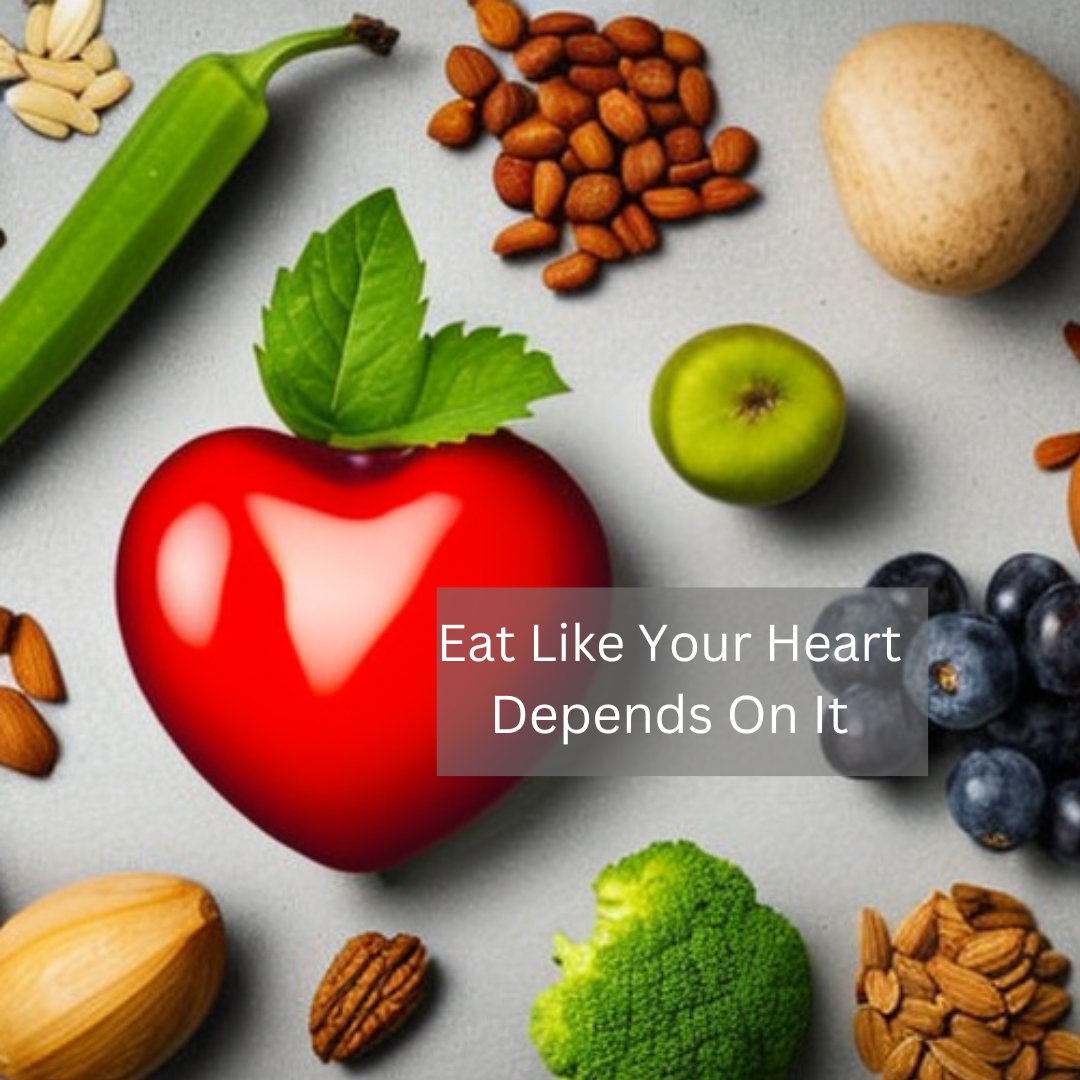February is American Heart Month and although we (including me!) splurge and enjoy our chocolate and create sweets in alluring heart shapes with yummy toppings and fillings, it is also the month to refresh or begin a new relationship with our physical heart. For those of us who are over 40, it’s particularly important to discover what’s new, evaluate our status, estimate our risk, and see what we can do to prevent cardiovascular disease, in other words, lower our risk of a heart attack or stroke within the next 10 years.
the month to refresh or begin a new relationship with our physical heart. For those of us who are over 40, it’s particularly important to discover what’s new, evaluate our status, estimate our risk, and see what we can do to prevent cardiovascular disease, in other words, lower our risk of a heart attack or stroke within the next 10 years.
Although recent meta-analyses are reporting that lipid levels in the U.S. are trending down, cardiovascular disease is still the #1 cause of death in the United States. Our statistics are still astounding – 50% of Americans will be diabetic or prediabetic by 2030 and for those concerned about healthcare costs and Medicare longevity – 75% of medical costs are preventable that reflect cardiovascular disease, stroke, diabetes, etc.
It’s easy to get complacent and feel that warning signs are the usual suspects – chest pain and shortness of breath. But let’s look at a few early warning signs that I find are noteworthy, and a bit mindboggling.
High Blood Pressure
I have been in healthcare long enough to remember higher threshold numbers. Gone are the days of 130/90 being slightly elevated. the new guidelines are anything above 120/80. Yee-gods.
Normal = less than 120 and less than 80.
Elevated = 120-129 and less than 80.
High Blood Pressure Stage 1 = 130-139 or 80-89.
High Blood Pressure Stage 2 = 140 or higher or 90 or higher.
Hypertensive Crisis (call your doctor immediately) = Higher than 180 and/or higher than 120.
How is your blood pressure running these days?
Cholesterol – Total Cholesterol and HDL/LDL parameters still seem to be the gold standard for determining if statin therapy is warranted and beyond the scope of writing this article. They are continually being adjusted based on adjunct factors including age, co-morbid conditions, family history, and more. But there is a new kid on the block – apoB or apolipoprotein B. There are more human studies with large cohorts looking at this value as a biomarker of cardiovascular disease, rather than just the traditional TC. We’ll see where that leads us in regards to cardiologists ordering it, but, in the meantime, if you want to know your apoB, you can personally request the test through free-standing labs for less than $50 (in most cases).
The American College of Cardiology, U.S. Preventative Services Task Force, and other groups are building consensus for elaborate algorithms to determine when a statin is warranted. All the algorithms and interventions, though, suggest lifestyle changes which include smoking, weight loss, and improving dietary eating patterns, i.e. eating more plants and less meat. They are a bit hidden in the dust of pharmacological treatment but they are there and get very little press, or advertising time, unfortunately.
In addition, the American College of Cardiology, American Medical Association, and American Heart Association seem to all have a consensus around the following (pulled from the ACC website and guidelines):
The following are key points to remember from the 2021 American Heart Association (AHA) scientific statement on dietary guidance to improve cardiovascular health:
- Adjust energy intake and expenditure to achieve and maintain a healthy body weight. Energy balance may be achieved by combining a healthy dietary pattern with ≥150 minutes of moderate physical activity per week. Metabolic needs decrease by about 70-100 calories per day with each decade of adult life.
- Eat plenty of fruits and vegetables; choose a wide variety. A diet rich in fruits and vegetables—except for white potatoes—is associated with a reduced risk of cardiovascular disease (CVD). Eating a wide variety of these provides adequate essential nutrients and phytochemicals. Fresh, frozen, canned, and/or dried fruits and vegetables are all acceptable.
- Choose foods made mostly with whole grains rather than refined grains. Randomized controlled trials have shown that eating whole grains instead of refined grains improves cardiovascular risk factors.
- Choose healthy sources of protein.
- Mostly protein from plants (legumes and nuts): Higher intake of legumes (beans and peas) was associated with lower CVD risk in a recent systematic review. Higher nut intake was associated with lower risk of CVD, coronary heart disease (CHD), and stroke.
- Fish and seafood: Current evidence supports dietary patterns that include ≥2 fish meals per week. However, the preparation of fish by frying is not associated with benefits.
- Low-fat or fat-free dairy products instead of full-fat dairy products: Dietary patterns that include low-fat dairy are associated with a lower risk of obesity, CVD, and mortality.
- If meat or poultry are desired, choose lean cuts and avoid processed forms: There is a direct association between red meat intake and CVD incidence and mortality, and an even stronger association for processed meat such as bacon or hot dogs.
So, what can you do to celebrate American Heart Month and lower your risk of having a heart attack in 10 years?
Follow the eating pattern guidelines
Eat mostly plants, and whole foods when possible
Keep meat, fish, and dairy at the top of your eating pattern pyramid
Know your numbers
Know the early warning signs and symptoms of a heart attack
Exercise – it doesn’t need to be epic – just every day
Join the #OurHearts Movement!

Ways To Transition to Eating More Plants
There are a zillion ways to transition the mind from thinking of meat first and plants second to making plants first on the plate.
Some common ways are:
- Meatless Monday – speaks for itself
- One Meal a Day – transitioning one meal to full plants – whole foods or otherwise
- Transformational Change – immediately removing all non-vegan food items from the kitchen, fridge, and pantry.
- Meatless Monday through Friday and flexing on the weekend
- Cutting back on meat serving sizes or frequency first
- Eliminating dairy
- Swapping white flour foods for whole grains
- Naming days of the week to trigger a meatless day – Meatless Monday, Taco Tuesday, Wok Wednesday
- Creating cuisines days – Moroccan Monday, Thai Tuesday, etc.
- Testing one NEW fruit, vegetable, grain, bean, legume, seed, or nut every day
- and of course, many, many more!
Types of Plant-based Eating Patterns
There are a plethora of plant-based, plant-forward, plant-slant eating pattern options to choose from. It is not a one size fits all eating pattern.
- Vegan
- Whole foods, no oil, no salt, no sugar
- Mediterranean
- Plant-based Keto
- DASH
- Blue Zones
- Vegetarian
- Ovo-veg
- Lacto-veg
- Flexitarian
- Pescatarian
There is a plant-based for everyone, everyone’s palate, tolerance, and microbiome. Some people have intolerances and allergies, for example, lactose intolerance in adulthood is most prevalent in people of East Asian descent, with 70 to 100 percent of people affected in these communities. 80% of Blacks and Native Americans are lactose intolerant. Lactose intolerance is also very common in people of West African, Arab, Jewish, Greek, and Italian descent.
Other free resources:
“Eat real food. Not too much. Mostly plants.” – Michael Pollan
Need more info on how to eat more plants? Read How our family transformed to a plant-based lifestyle.









